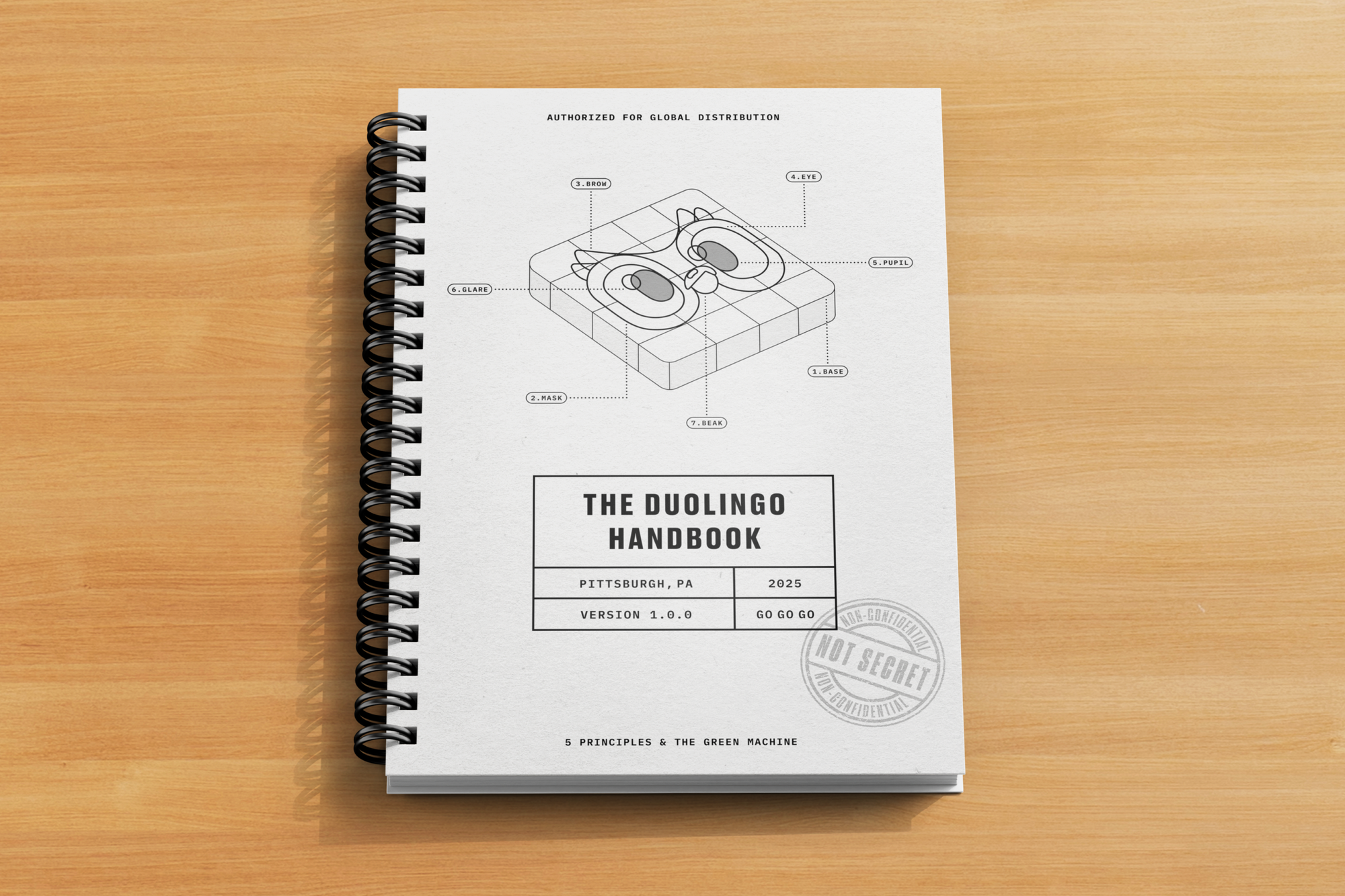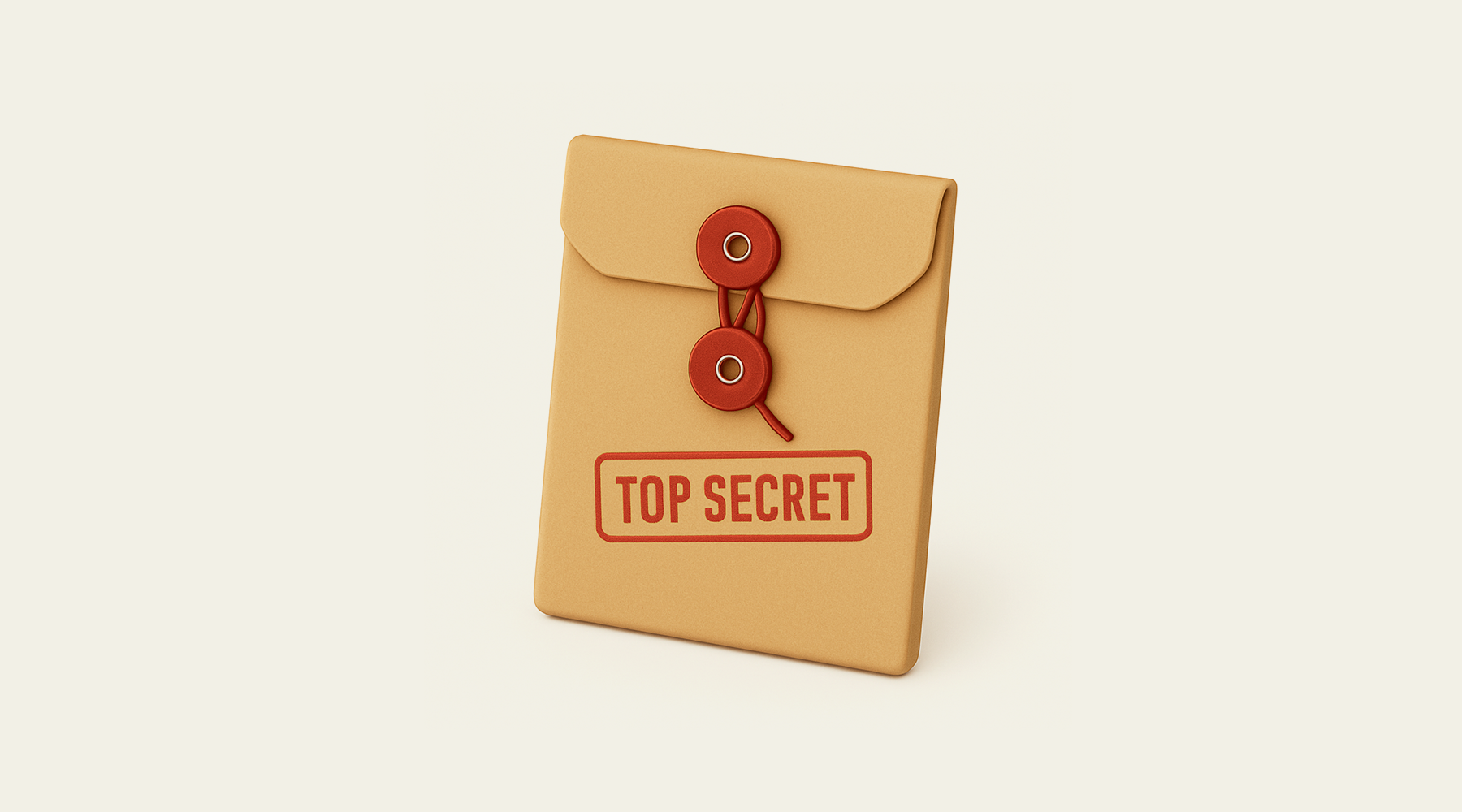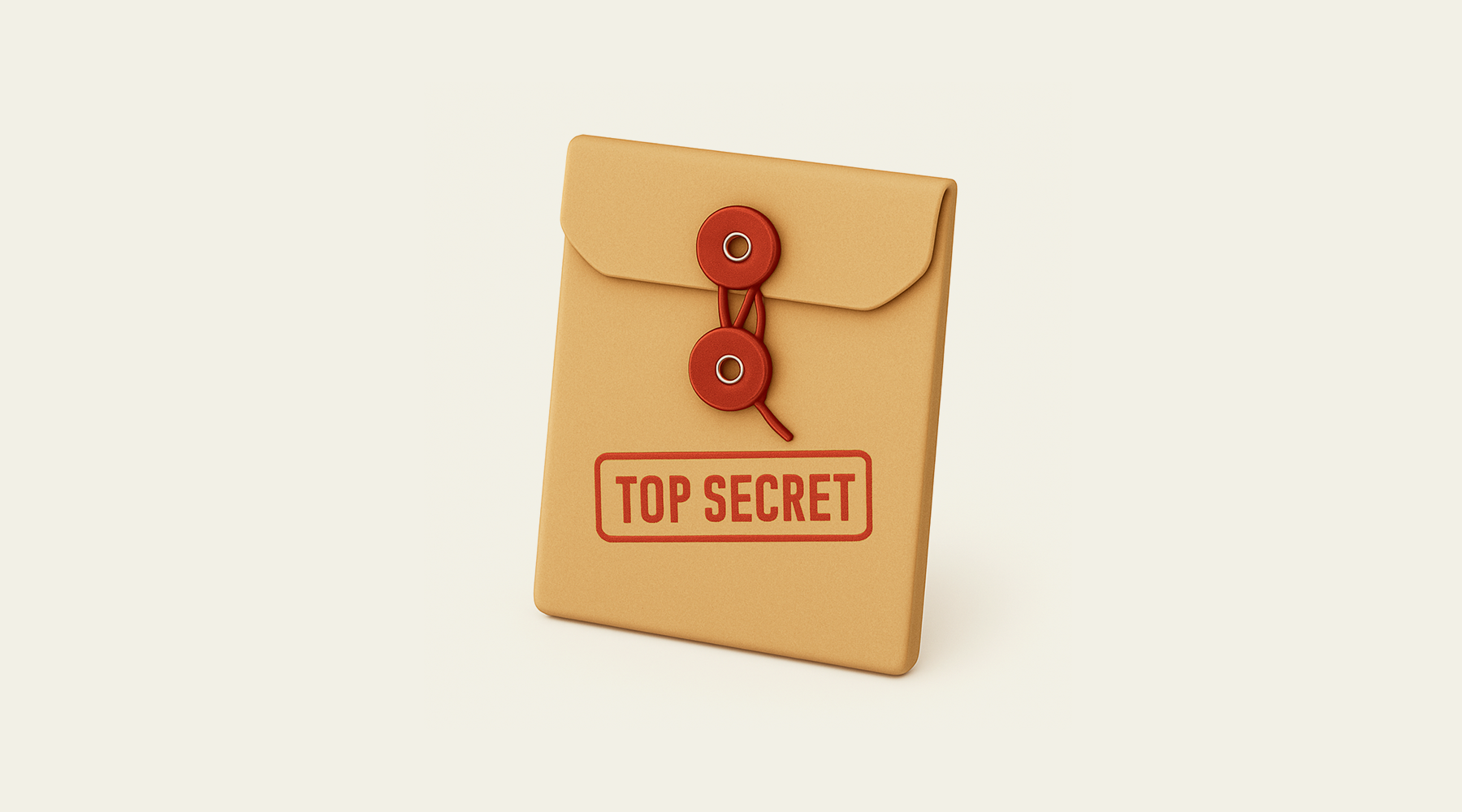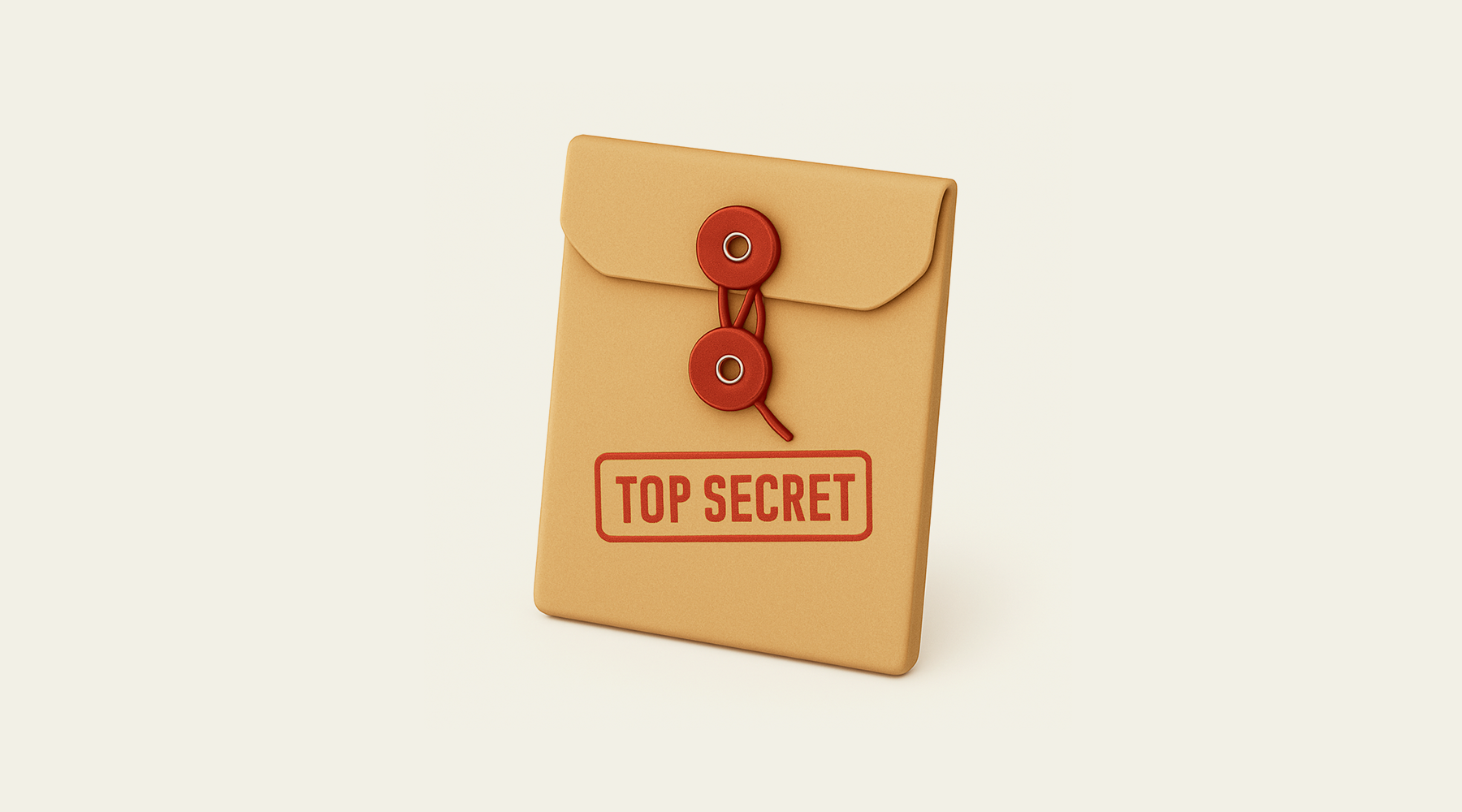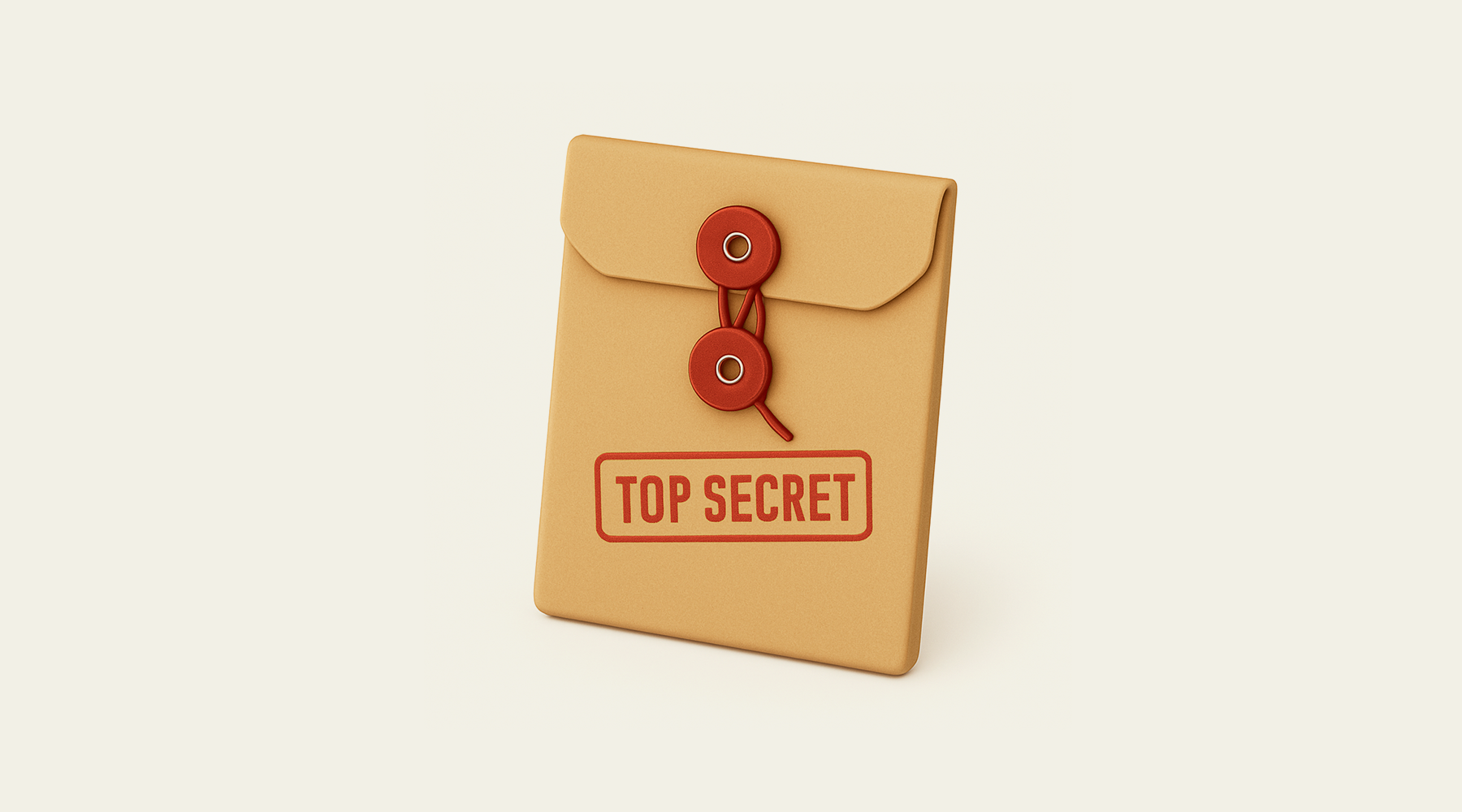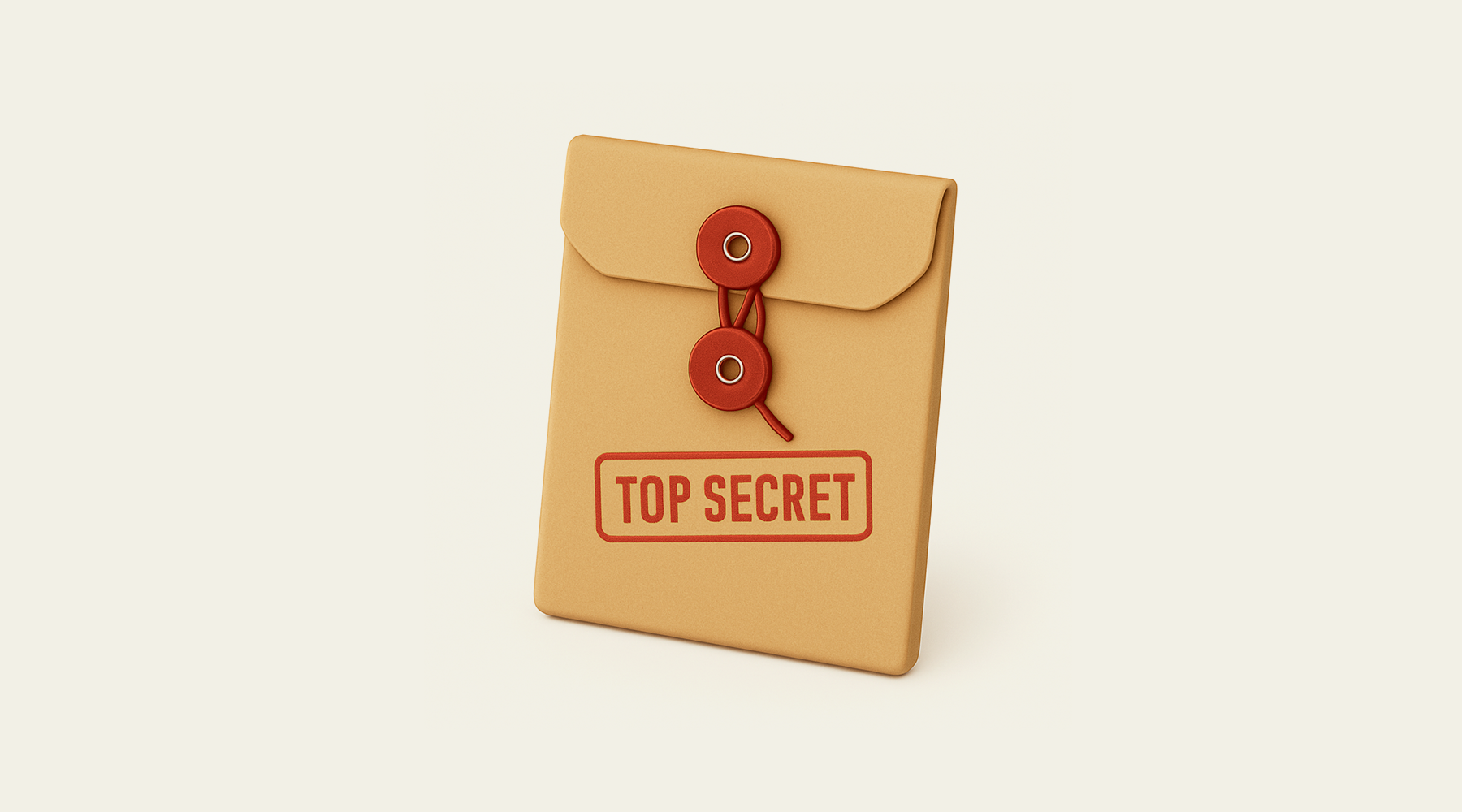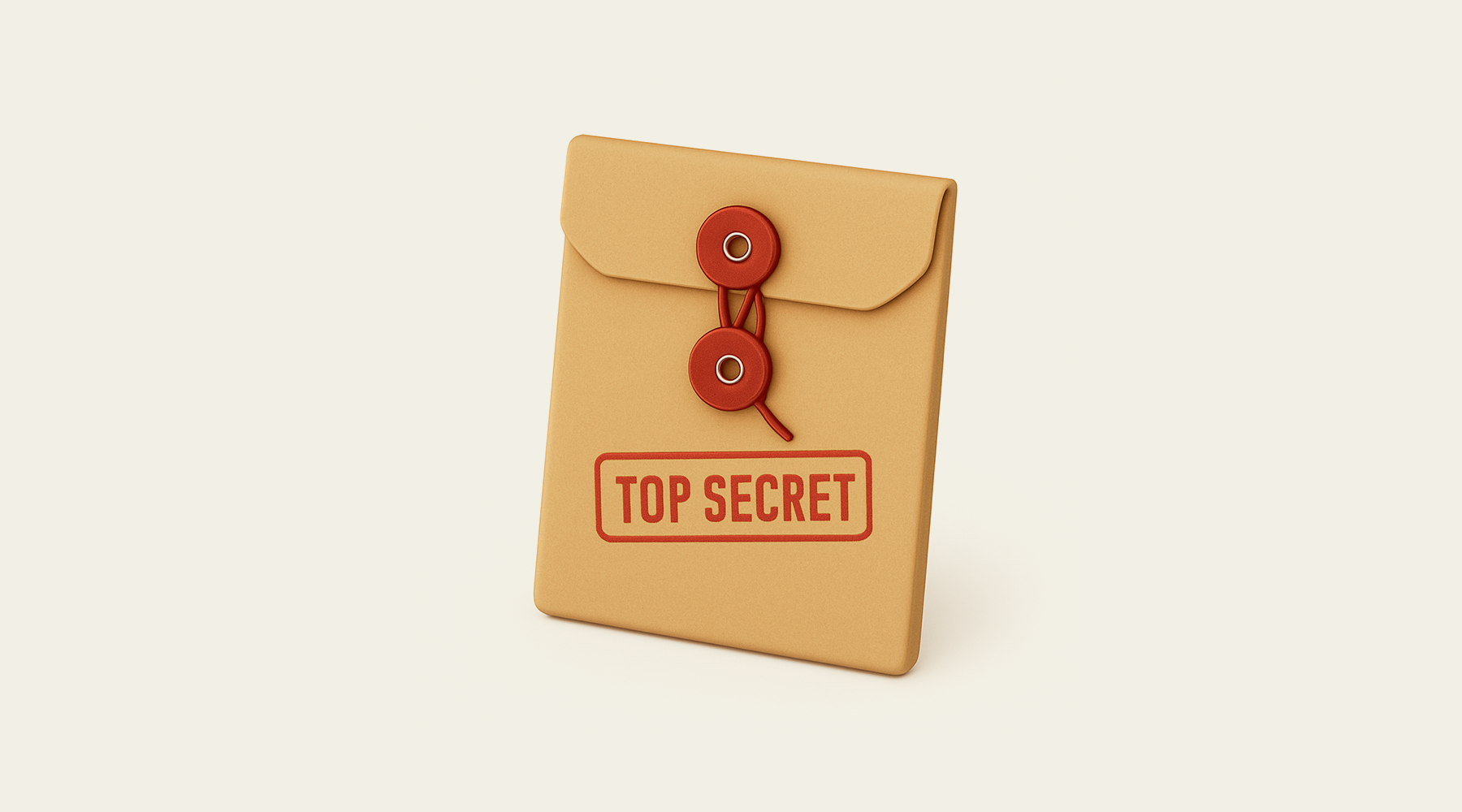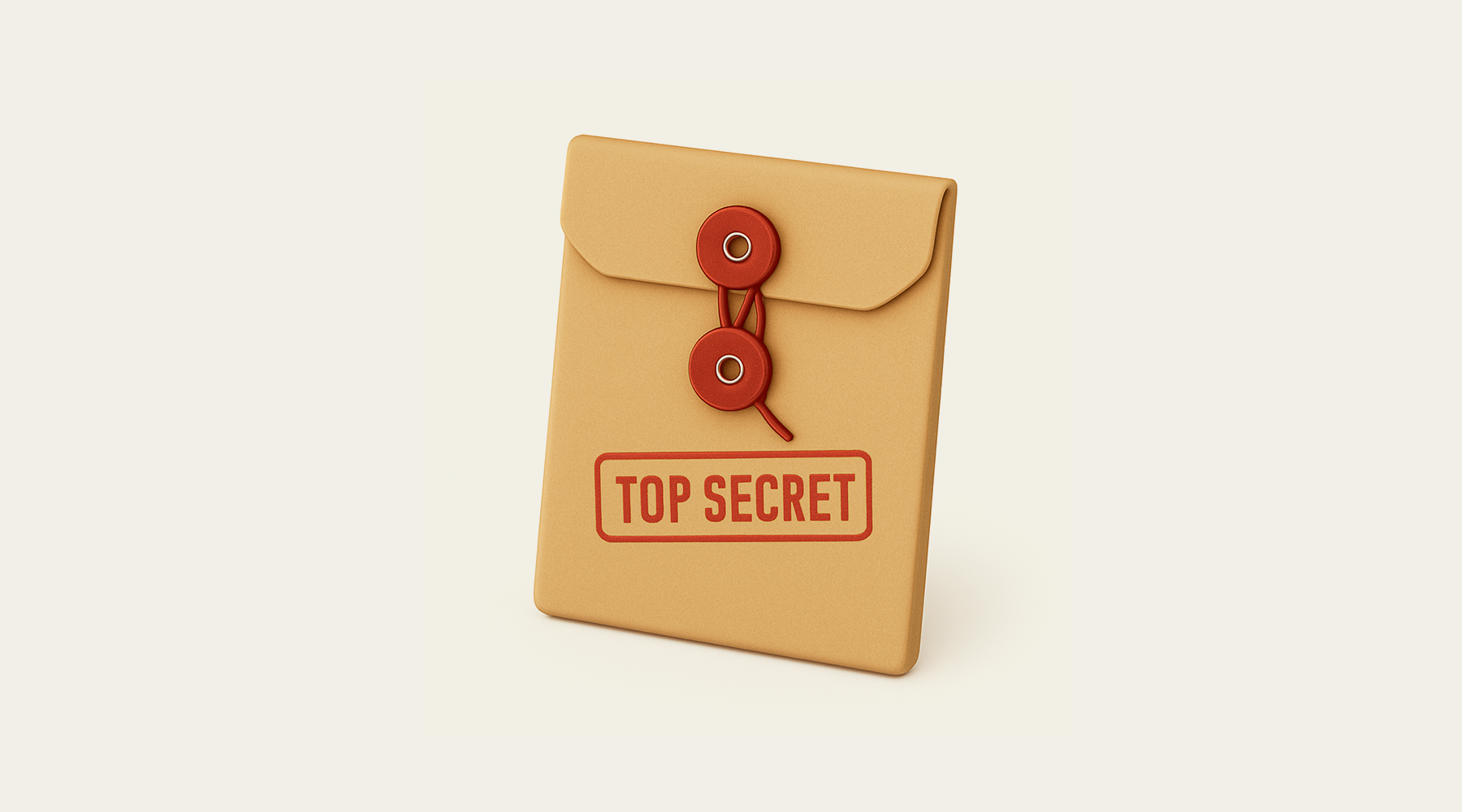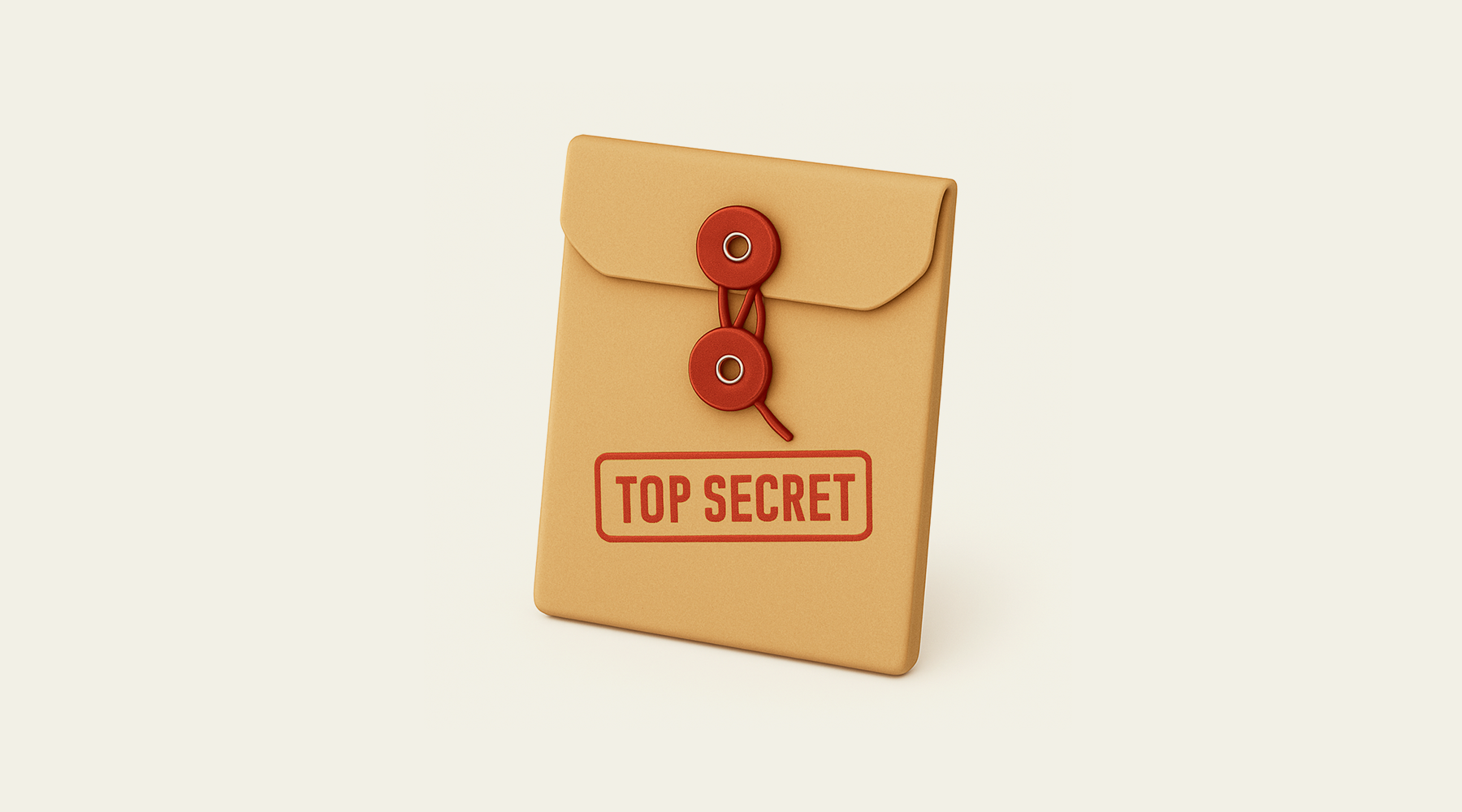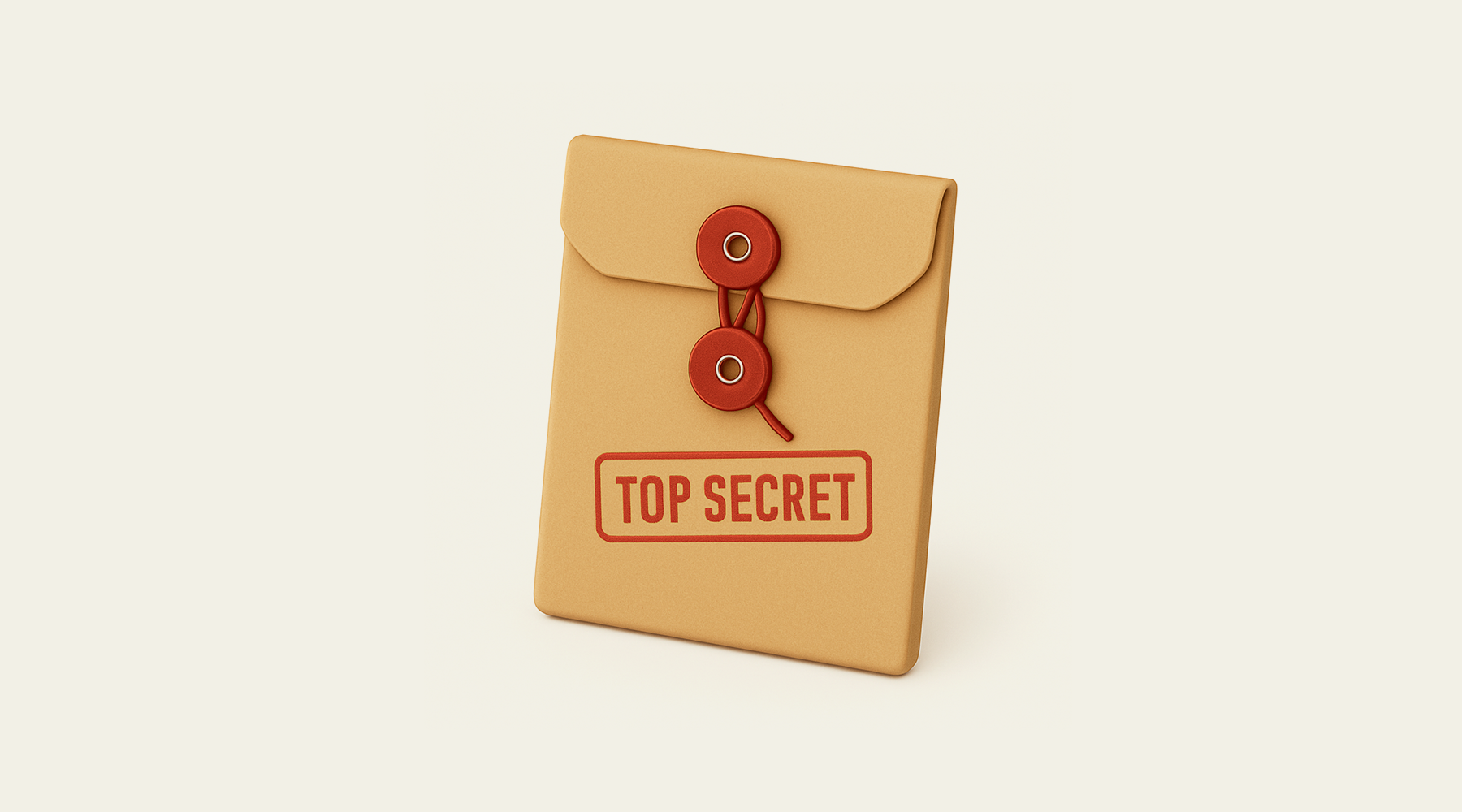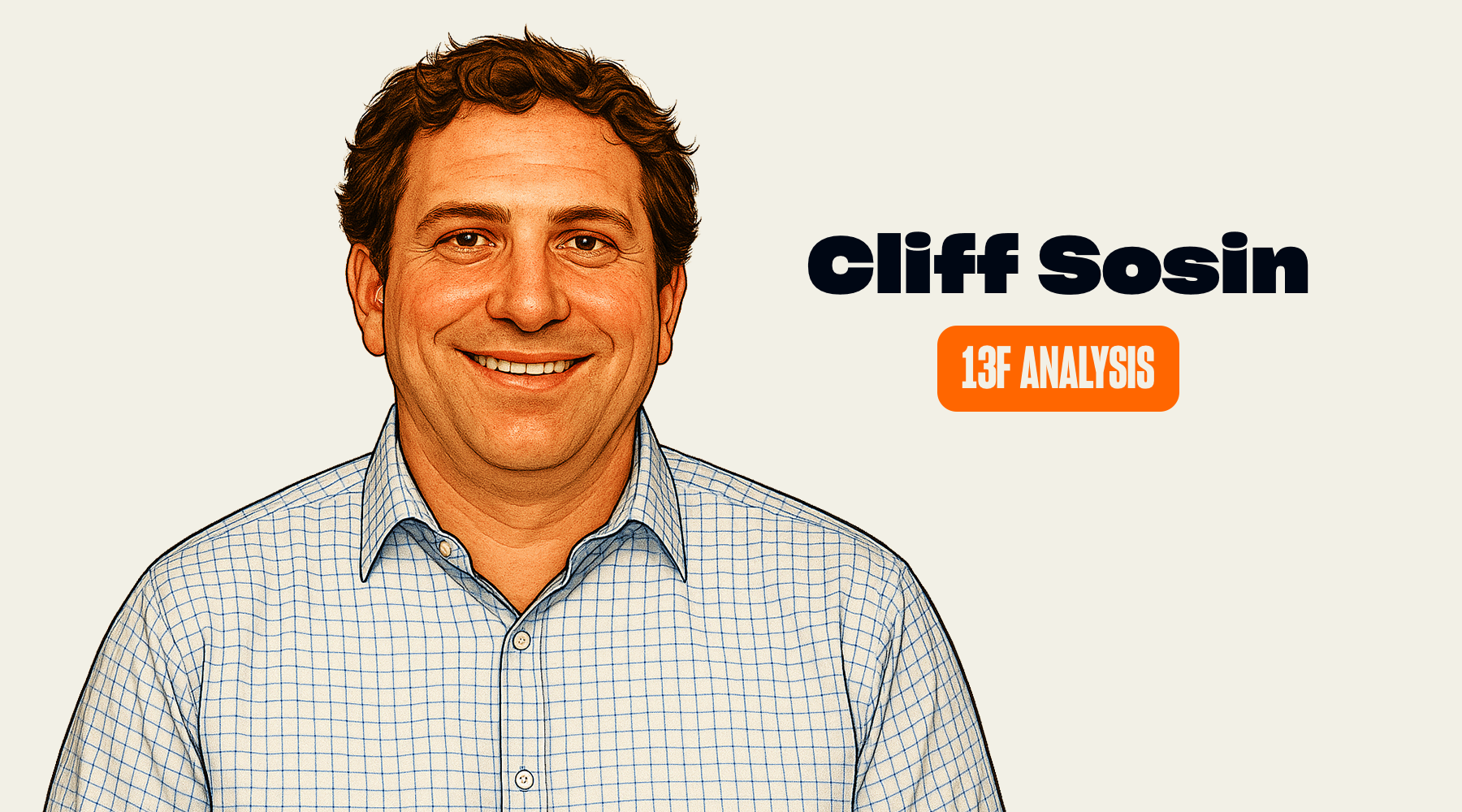Duolingo spent 14 years refusing to charge for education, then built a $7B company by making their owl increasingly menacing. Their secret? "Better a hole than an a**hole" hiring and shipping 100+ experiments weekly. Learn how being wholesome but unhinged works in this Duolingo Handbook summary.
- Book: The Duolingo Handbook
- Author: Jack Morgan
- Pages: 68
- Rating: 5 out of 5 Stars
- Recommended for: Founders building consumer products, product managers obsessed with retention, anyone who wants to understand how to make work fun.
The 30-Second Summary
Duolingo built the world's most valuable education company by treating language learning like a video game and their mascot like a mob boss—all while keeping the core product completely free. After Luis von Ahn sold reCAPTCHA to Google, he gathered nerds above a Pittsburgh sports bar to build "the best education in the world and make it universally available," discovering that shipping hundreds of weekly experiments while maintaining a "wholesome but unhinged" brand could make education as addictive as TikTok. The real insight: excellence comes not from being perfect, but from being "a little bit better each day" through relentless experimentation.
In a nutshell: Build a forever product by taking the long view, ship hundreds of experiments weekly, and make your mascot threatening enough that people actually do their homework.
About the Author
Jack Morgan leads content and culture initiatives at Duolingo, helping articulate the company's unconventional approach to building products and teams. Working alongside founders Luis von Ahn and Severin Hacker, he's documented how a team of Pittsburgh nerds with no startup playbook built a $7 billion education empire. This handbook represents 14 years of experimentation distilled into actionable principles.
The 3 Big Ideas
1. Take the Long View (Even When It Costs Millions)
Duolingo refused to monetize for years, turning down easy revenue from ads because "too many ads can annoy users and stifle long-term growth." Even after introducing monetization, they kept learning free—a decision investors questioned constantly.
The core insight: If it helps short-term but hurts long-term, it's not right.
Luis had already sold reCAPTCHA, giving him "flexibility and perspective to think about our mission first and foremost." This let them build features like the Duolingo Score—which could take decades to become the proficiency standard—while competitors chased quarterly earnings. They even redesigned the entire app with "Juicy" (brighter colors, rounder corners) purely for long-term brand building, expecting zero short-term metric improvements.
Key takeaway: Build systems for your grandchildren to use. Set notification limits even when more messages boost DAUs. Hire exceptional people even if it means waiting months with an empty role.
2. Ship It With Clock Speed Obsession
Duolingo ships new iOS and Android versions every week, running hundreds of experiments simultaneously. Their mantra: minimize gaps between decision and implementation, between feedback and changes.
The core insight: The faster you run experiments, the faster you compound improvements.
They don't build MVPs—they build V1s. The difference? MVPs excuse subpar work; V1s are polished but minimal. Every feature must be useful, intuitive, delightful, and polished from day one. This approach came from their early days in one room above a sports bar, where they "were testing and learning at warp speed" without any formal processes. Now it's systematized: Product Review happens weekly, anyone can attend, and decisions are binding.
Key takeaway: Test in the real world rather than debate in conference rooms. Cut features ruthlessly if they don't move metrics. Only add process if it makes decisions faster, not slower.
3. Make It Wholesome but Unhinged
Duolingo competes with TikTok and Instagram for attention, so they made their owl progressively more threatening and their sentences deliberately absurd ("Your bear is drinking beer"). The result? A education company with a mob boss mascot.
The core insight: Not everyone will get the joke, and that's exactly the point.
They discovered this during April Fools experiments—the further they pushed, the more viral they went. So they committed: Duo appeared at the Barbie premiere, starred in a fake dating show, and shot another owl out of his butt during a five-second Super Bowl ad. Marketing became "weird, unexpected, and often funny" because "in marketing, there's nothing worse than being bland."
Key takeaway: Lean into what makes your fans laugh, even if others don't get it. Build emotional connection through characters—it's a moat AI can't replicate.
Key Frameworks
The Green Machine
Duolingo's systematic approach to building anything:
What it is: A six-step process for continuous improvement through small changes that compound over time.
How to apply it:
- Staff it with great people (lean teams of exceptional talent)
- Define success (clear metrics: DAUs, bookings, or impressions)
- Set guardrails and think long-term (protect the mission)
- Build the thing and set up feedback loops (quantitative and qualitative)
- Execute with urgency and excellence (ship weekly, maintain quality)
- Double down on what works, stop what doesn't (allocate resources to winners)
When to use it: Any project that's stuck—maybe you didn't think carefully about your team, or you lack proper feedback loops.
The Four Elements of Excellence
Every product feature must hit all four marks:
What it is: Duolingo's quality bar for shipping features.
The standards:
- Useful - Learners get utility or it's cut
- Intuitive - Works for a 75-year-old in India and 16-year-old in NYC
- Delightful - Some amount of fun and magic, even in V1
- Polished - Tight design, perfect copy, seamless interactions
When to use it: Evaluating any feature before it ships—if it fails any element, it doesn't go live.
Clock Speed Methodology
What it is: Minimizing gaps between steps to maintain momentum.
How to apply it:
- Measure time between decision and implementation
- Identify bottlenecks creating "idle time"
- Remove unnecessary approval layers
- Never wait a month for the next iteration
When to use it: When projects feel slow or stuck in endless discussion loops.
Notable Quotes
"If it helps in the short-term, but hurts Duolingo in the long-term, it's not right."
Why this matters: This single principle has guided every major decision, from refusing early monetization to limiting notifications.
"Better a hole than an a**hole."
Why this matters: They once passed on a senior executive who'd been searching for over a year because he was rude to the airport driver.
"Don't do dumb s**t."
Why this matters: Their original mantra that evolved into "Take the Long View"—avoiding gimmicks that might seem helpful short-term.
"Excellence does not get easier. But we did not sign up for easy."
Why this matters: Sets the expectation that maintaining quality is a constant struggle, not a destination.
"You'll hear stories about a company 'going viral' in a week. But for products that get big & stay big—they were patient; they weren't a short term hack."
Why this matters: Explains why they focus on retention over acquisition, streaks over downloads.
"In tech, there are plenty of mercenaries who don't care about mission and will sell their skills to the highest bidder. They don't end up at Duolingo."
Why this matters: Why early employees took 50% pay cuts to build education tools instead of joining bigger tech companies.
"Using Duolingo is like eating broccoli covered in ice cream. You enjoy it—and you get something valuable out of it."
Why this matters: The fundamental tension they've solved: making education as addictive as entertainment.
"We are only what we do, not what we say we are."
Why this matters: Why they measure everything and let metrics, not narratives, guide decisions.
"The best way to present work is to pretend like you're showing it to real humans who use Duolingo. Users won't read through long decks—they just want to see the things."
Why this matters: Prototypes beat pitch decks; showing beats telling.
"Hard on the work, easy on the people."
Why this matters: How to maintain excellence in a warm culture—critique the "what," not the "who."
"We're at our best when we're subverting normal expectations people would have about an education company."
Why this matters: Why their mascot became a mob boss and their marketing got progressively more unhinged.
"Moving with urgency means choosing what matters and executing it with a ridiculous amount of focus."
Why this matters: Not about rushing—about eliminating gaps between steps.
"Long-term brand value is more important than any short-term gimmick."
Why this matters: Why they invest in characters and stories that might take decades to pay off.
"When we're deciding whether to ship something, we always like to ask: 'Why not now?'"
Why this matters: Default to action rather than endless deliberation.
"Shutting down an experiment isn't a failure; it's an opportunity to learn. Over the years, we've launched only about 30% of the experiments we run."
Why this matters: 70% failure rate is a feature, not a bug—it means you're pushing boundaries.
"The tyranny of metrics: Fixating on the numbers can sometimes lead us astray."
Why this matters: Why they still invest in teaching quality even when it doesn't immediately boost revenue.
"We tend to favor short, precise documents over lengthy presentations. This keeps us focused on delivering great work instead of justifying it."
Why this matters: TL;DRs force clear thinking; brevity reveals understanding.
"Succeeding at Duolingo isn't about making yourself look great—it's about doing something great for our users & the business."
Why this matters: Ideas before egos; let metrics decide disagreements.
"Fun isn't just a feature—it's the reason we've been able to scale."
Why this matters: Gamification isn't decoration; it's the core value proposition.
"We're open about the most important issues at the company—even ones that other places might try to keep quiet."
Why this matters: Luis works in a fishbowl conference room; anyone can attend Product Review.
"Great experiments require exceptional teams who can quickly brainstorm ideas, execute, and pivot on a dime."
Why this matters: Why they keep teams lean and only add people after proving success.
"Only things that are owned become excellent."
Why this matters: Every critical project needs one person who's ultimately responsible.
"When two parties disagree, both commit to moving forward with a decision and letting the results speak for themselves."
Why this matters: How Luis agreed to test Leaderboards despite doubts—now it's a key feature.
"A great culture is hard to build, easy to lose, and essential for our success."
Why this matters: Why they invest in 100+ employee clubs and fly everyone to Cancun without agendas.
Related Ideas
Steve Jobs on simplicity and design: Jobs famously said "Simplicity is the ultimate sophistication." Duolingo embodies this with their "intuitive" requirement—if a feature needs explanation, it fails. Like Apple, they refuse to ship anything that isn't both functional and delightful, maintaining what they call the "four elements of excellence."
Jeff Bezos on long-term thinking: Bezos built Amazon by accepting losses for years while building infrastructure. Similarly, Duolingo refused to monetize for years, with Luis using his reCAPTCHA exit to fund the mission-first approach. Both companies prioritize customer experience over quarterly earnings.
Walt Disney on character IP as competitive moat: Disney understood that emotional connection to characters creates lasting value. Duolingo explicitly states their characters are "a crucial moat for our business, especially in the era of AI learning tools"—someone could clone the app but not the emotional connection to Duo.
Nintendo on making learning feel like play: Duolingo explicitly modeled their character design after Nintendo rather than education companies. Like Nintendo's approach to "serious fun," they discovered that "gamification isn't decoration; it's the core value proposition."
Andy Grove on OKRs and measurement: Grove's OKR system at Intel directly influences Duolingo's approach—they set team OKRs quarterly and company OKRs annually. Their principle "Show Don't Tell" echoes Grove's "only the paranoid survive" through constant measurement.
Ray Dalio on systematic principles: Like Dalio's approach in Principles, Duolingo treats their company as a machine that can be optimized. The Green Machine framework mirrors Dalio's systematic improvement through recorded principles and feedback loops.
Reid Hoffman on shipping early and often: Hoffman's famous quote "If you're not embarrassed by the first version, you've launched too late" gets refined at Duolingo—they ship V1s not MVPs, maintaining quality while moving fast. They ship new app versions weekly, embodying Hoffman's bias toward action.
Natural Next Reads
- Creativity, Inc. by Ed Catmull: How Pixar built a creative culture that consistently ships excellence
- Zero to One by Peter Thiel: On building monopolies through differentiation (like Duolingo's character moat)
- Good to Great by Jim Collins: The hedgehog concept and why Duolingo focuses only on education
- Hooked by Nir Eyal: The psychology behind Duolingo's streak mechanism and retention loops
- Shoe Dog by Phil Knight: Another story of building a global brand through unconventional methods
Reflection Questions
- Where in your organization are you shipping MVPs when you should be shipping V1s?
- What short-term revenue are you leaving on the table to protect long-term user trust?
- How could you increase "clock speed" by removing gaps between decision and implementation?
- What would happen if you made your brand 10x more distinctive, even if some people didn't get it?
- Are you measuring actual impact or just activity? What vanity metrics are you protecting?
Practical Applications for Founders
- Strategic Planning: Define your "forever product"—what would last 100 years?
- Team Building: Implement "Better a hole than an a**hole" hiring—wait for exceptional.
- Decision Making: Ask "Why not now?" for every delayed decision.
- Resource Allocation: Run 100+ small experiments rather than betting on one big launch.
The Bottom Line
Duolingo proves you can build a $7 billion company while keeping your core product free, making your mascot progressively more threatening, and shooting owls out of butts on national television. The secret isn't choosing between excellence and speed—it's building systems that demand both. By running hundreds of experiments weekly, hiring only exceptional humans (even if it means waiting months), and committing to being "wholesome but unhinged," they've made education as addictive as social media. The question isn't whether to be weird—it's whether you're weird enough that your fans will tattoo your owl on their bodies.
Transcript of The Duolingo Handbook: 5 Principles and The Green Machine
Our mission is to develop the best education in the world and make it universally available.
Letter from Luis
Duolingo is a quirky place.
Our culture wasn't copied from a tech startup playbook. It was built from scratch by a few dozen nerds in an office above a sports bar in Pittsburgh, Pennsylvania.
For most of our early employees, Duolingo was their first real job. Without much experience, we had to experiment our way through the basic questions: Who should we hire? What's the best way to build an app? How should we organize ourselves to build it? Doing it this way took time. But in the end, nothing could have been better for our culture and success.
Over time, we've sharpened our answers to these questions and many more. Now, fourteen years in, we've decided to put these answers into writing, and articulate how we do things.
At the center of this book are five principles. These aren't aspirational—they're lessons we've learned through experience. But they're also living ideas: they have tensions within them, and there are places where they don't always fit. We hope you study them, challenge them, and help us make the next version of this book even better.
Thanks for reading.
And welcome to Duolingo.
— Luis
TL;DR
Take the Long View
- We're building a forever product that puts long-term user retention first.
- We hire exceptional people who will grow with Duolingo and shape its future for years to come.
- We're creating a 100-year brand with delightful, quirky characters that become a part of learners' lives.
Raise the Bar
- Every feature we ship must be intuitive, delightful, useful, and polished.
- We make sure critical tasks have a clear owner.
- We constantly dogfood our products to identify bugs and propose improvements.
- We give candid feedback that focuses on the "what" and not the "who."
Ship It
- We optimize "clock speed," minimizing gaps between steps to maintain momentum.
- We run hundreds of experiments each week in order to constantly improve our products and our organization.
- We ruthlessly prioritize projects with the highest impact and quickly cut what isn't working.
- We'll only introduce a new process if it helps us make faster, better decisions.
Show Don't Tell
- We lead with the results of our work, not the story of its effort.
- Our products don't have to explain themselves—they should be intuitive to everyone.
- When we disagree, we test ideas and let the metrics decide.
Make It Fun
- Our product is built on play, using gamification and design to make learning fun.
- Our brand is wholesome but unhinged: we lean into what makes our fans laugh, even if not everyone gets the joke.
- We design our offices and culture to be quirky and welcoming, sparking joy and connection among Duos.
The Green Machine
The Green Machine is our approach to building things:
- Staff it with great people
- Define success
- Set guardrails and think long-term
- Build the thing and set up feedback loops
- Execute with urgency and excellence
- Double down on what works, stop what doesn't
A Note Before Reading
Duolingo is a product-led organization. But the ideas in this book aren't just about building a great product—they're about building a great company, together.
Not every section applies to every employee in every situation. Think of the principles simply as a guide to understanding how we work when we're at our best.
Principle #1: Take the long view.
If it helps in the short-term, but hurts Duolingo in the long-term, it's not right.
Duolingo was never going to be a sprint.
It wasn't a quick experiment, or a weekend side hustle. We knew that building the best education app in the world would be a multidecade effort—and that it would require patience. But patience—that is, taking the long view—is hard.
Take advertising. We could increase revenue tomorrow by showing more ads in the app. But we know that too many ads can annoy users and stifle long-term growth, potentially compromising our goal of making the best education universally available.
This is a real trade-off. But over and over, we've taken the long view. We have to: our goals are too big to think any other way.
In the Beginning
Not every company is able to operate like this. But we had a few early advantages that made taking the long view possible. For one, Luis had already sold his first company, reCAPTCHA, in 2009. As he put it: "This gave me the flexibility and perspective to think about our mission first and foremost."
So we set out to build something groundbreaking—the kind of educational tool our children and grandchildren might still be using. The clarity of this vision, along with the trust of our earliest investors, gave us leeway as we figured out what Duolingo could be. Equally important: we hired folks who were just as crazy about our mission. Back then, many of them could have doubled their salaries working at bigger tech companies. But they didn't come here to make a quick buck—they came here to build the best learning tool on the planet.
Don't Do Dumb S**t
The temptation of short-term wins can be powerful. We had a simple mantra in the early days: "Don't do dumb s**t." Looking back, this was the first version of "Take the Long View." We knew that to have any shot at meaningful success, we had to steer clear of gimmicks and tricks that might seem helpful in the short-term but hurt us down the road.
"You'll hear stories about a company 'going viral' in a week. But for products that get big & stay big— they were patient; they weren't a short term hack."
— Luis
Betting on Technology
Taking the long view isn't just about what you avoid—it's also what you embrace. We are tech optimists. From the beginning, we've believed that technology will advance enough to make our most ambitious ideas possible. And betting on that has been crucial to how we operate. For example, we invested in early text-to-speech systems instead of recording human voices: even though our audio sounded robotic at first, we knew the technology would improve with time.
Long View Hiring
Hiring decisions are some of the most important decisions we make. That's why we take time to find the right person — even if it means waiting. Each new hire needs to meet our bar. Is this person exceptional? Are they willing to get their hands dirty? Are they a clear communicator? Will they prioritize what's best for the company over their personal goals?
We don't compromise our hiring standards to fill a hole in the organization, especially when it comes to being a team player. As we say at Duolingo: "Better a hole than an a**hole."
"In tech, there are plenty of mercenaries who don't care about mission and will sell their skills to the highest bidder. They don't end up at Duolingo."
— Severin
The good thing is, when you hire the right people, they tend to stick around. And our experience validates this: on average, Duos stay here much longer than employees at most tech companies. Many are exceptional generalists who start with us as new college grads, develop their skills here, and take on new challenges over time. Whatever your experience level, we want you here for the long run.
Building a Forever Product
The Duolingo app is designed to be sticky in the short-term and transformative in the long-term. For years, we've focused on building something so useful and delightful that it becomes an essential part of our learners' lives.
Learning—particularly language learning—requires regular practice over extended periods of time. That's why we prioritize user retention, and have spent years perfecting the Streak feature. The more we can do to keep our learners committed for the long haul, the more value they'll get from Duolingo.
We also invest in teaching better. Even though this doesn't generate immediate revenue, we know that if a product fails to deliver on its promise, people will eventually stop using it.
"Using Duolingo is like eating broccoli or tasting ice cream. You enjoy it — and you get something valuable out of it."
— Bozena Pajak
Notifications
Every day, Duolingo sends millions of messages to learners. These notifications present a fundamental tension between long-term thinking and short-term goals.
More notifications leads to more Daily Active Users (DAUs)* in the short-term. But people who feel bombarded don't stick around for long—they eventually turn off notifications or abandon the app entirely. That's why we put firm limits on notifications, regardless of what the short-term metrics suggest. User trust matters more than immediate gains.
Juicy
Duolingo didn't always look like the app you see today. For years, it featured a light gray background, muted button colors, and a more robotic-looking Duo. But in 2018, a few of our designers and illustrators began working on a concept for a kids' app. With brighter colors, rounder corners, and a cuter, friendlier Duo, the new design made learning feel more like a game. It was exactly the kind of playful experience we wanted for the main app. So, even though we didn't expect it to boost metrics in the short-term, we took the leap and applied this new design language—dubbed Juicy—across all of Duolingo.
DAUs: Daily Active Users. The number of individuals using Duolingo every day across iOS, Android, and the website.
This redesign wasn't just about aesthetics; it was an investment in the future. While risky and resource intensive, it set the foundation for the playful world that now defines our brand: expressive characters, delightful animations, and a learning experience that feels like play. By taking the long view, we created a design language that would scale with the product for years to come.
Setting the Proficiency Standard
When asked how much English somebody knows, we want them to say, "My Duolingo Score is 70." The Duolingo Score is an estimate of users' proficiency in the language they're learning, and the Duolingo English Test (DET) is a way to certify the score that can be used for high-stakes purposes, like university admissions. Together, they form our two-pronged approach to becoming the standard measure for language proficiency. Putting the score in the app gives us volume—hundreds of millions of people see it. Having a way to certify it with the DET gives us credibility—the score can get you admission to even the most prestigious universities in the world.
Of course, becoming the proficiency standard is not easy, and could take decades—but that's exactly why the Duolingo Score and the DET are great examples of taking the long view.
Engineering the Future
In engineering, taking the long view requires a slightly different approach. We know that we will still be improving our products years from now. So, we don't build systems to last forever. Instead, we test ideas quickly and only invest significant engineering resources when something is successful. If something doesn't work, we move on quickly, keeping the codebase clean and minimizing waste.
Video Call is a great example. We only invested in scaling and stabilizing it for long-term use once it showed traction with users. Another example relates to notifications. When we realized we'd be testing notification copy for years to come, we built a custom tool that allows Product Managers to test copy without engineering support.
This balance—focusing on speed while reserving long-term investments for what truly works—has guided our success.
Becoming a Business
For years, Duolingo didn't make money. We were laser-focused on growing our user base and keeping learners engaged. Also, some of us worried that monetizing Duolingo could get in the way of our mission.
That perspective began to shift after our Series D funding round in 2015. We started exploring revenue models—in-app purchases (IAPs), advertising, and paid subscriptions—with one key caveat: they could never compromise our mission. We weren't going to put learning behind a paywall.
Building a Monetization Engine
We started with in-app purchases, but there wasn't much to "buy" except a Streak Freeze. Advertising was also capped. We found that we could show one ad after each lesson without affecting user retention, but more than that would drive people away.
It became clear that introducing a freemium subscription product was the best opportunity to scale the business. The hard part was doing so while still offering an excellent product for those who couldn't pay. We landed on a subscription package that eliminated ads and gave learners unlimited hearts. Both of these features remove friction from the app. Over the years, we've continued to tweak this model, but the core dynamic is the same: the paid product gives us the resources to pursue our mission at the greatest scale, and the free product is largely how that mission is achieved.
Plenty of investors—and even some of us at Duolingo—wondered whether offering such a great free product would provide too little incentive for learners to subscribe. There will likely always be a tension between accessibility and revenue. But over time, our approach to monetization has shown that we can strike this balance, achieving long-term loyalty while building a large business.
"Long-term brand value is more important than any short-term gimmick."
— Luis
A 100-Year Brand
Through steady growth and clever marketing, we've made Duolingo a household name. Even people who've never used the app are familiar with our mascot, the delightful—if sometimes unhinged—Duo. We've invested a ton in Duo's journey, along with the rest of our characters and the world they inhabit. This says a lot about our ambitions. We're not just trying to help people get better at French. We want to build a brand and set of characters that become a part of people's lives, turning everyone in the world into daily learners.
Long-Term Value
If we report less revenue than expected in a quarter, our stock would likely go down. But we don't overindex on quarterly financials—we focus on having the most long-term impact for our learners. If we're successful, that will inevitably raise our value as a company.
Characters Count
Our characters make learning fun. Built from simple geometric shapes, each has a distinct personality and story. Together, they reflect the diversity of our learners and bring a sense of humor and play to the app.
But these characters—inspired more by brands like Nintendo than traditional learning companies—also serve an important strategic purpose. We see this IP as a crucial moat for our business, especially in the era of AI learning tools. That same emotional connection that makes learning enjoyable also makes our product stickier over time. Even if someone cloned our entire app, learners would still come back to Duolingo for the characters.
Investing in Marketing
At Duolingo, we've grown by creating a product that people genuinely love—and love to talk about. But we've also figured out how to use other levers, like performance marketing, to complement that organic growth. Our paid ads exist to amplify our word-of-mouth momentum, not replace it, so we are conservative with our spend. This allows us to invest in standout campaigns and reactive social moments that set us apart.
Our marketing team excels at creating high-impact content at a low cost. Thanks to their work, Duo has walked the red carpet at the Barbie premiere, hosted a (fake) dating reality show on the streaming service Peacock, and become an international social media star. These moments reflect the playful, irreverent energy of our brand and show how a thoughtful balance of organic growth and marketing can create meaningful impact.
The Path
Originally, learners navigated Duolingo through the Tree, which consisted of skills (e.g., going to a restaurant). Each skill began with basic word meanings and progressed to harder content, but learners only needed to complete the first level to move on. While this flexibility let them advance quickly, it often led to frustration when harder concepts came along and exposed gaps in their foundational knowledge.
In 2022, we took a leap: replacing the Tree with the Path. This new linear structure requires learners to complete every lesson in sequence, ensuring a consistent and strong foundation for everyone. The Path was a large undertaking across both engineering and design. We anticipated that learners might resist such a dramatic change to their routine. And even though the data didn't immediately show improvements in core metrics like DAUs or monetization, the switch was the right decision. It prioritized real mastery over speedrunning easy lessons to maintain streaks. It also gave us clearer insights into learner progress and greater control over the learning experience.
Sometimes taking the long view means making bold moves that might seem counterproductive in the moment. The Path was just that. It fundamentally changed how people learn with Duolingo and has been essential to our success.
Principle #2: Raise the bar.
To change how the world learns, we must do world-class work.
Excellence isn't some lofty goal—it's our baseline.
The expectation is that we'll do the best work of our careers here, constantly pushing our craft and ideas to meet our bar and then exceed it.
Still, we're human, and we're going to make mistakes. When that happens, we don't chase blame. We dig in and figure out what happened. This is how we continuously raise the bar—not by being perfect, but by being a little bit better each day.
"Excellence does not get easier. But we did not sign up for easy."
— Jack Morgan
Culture of Excellence
Our bar for quality was set at the top and at the beginning. Luis, Severin, and the early team share a nearly ridiculous attention to detail. (Luis is the rare CEO who still reports every bug he finds in the app.) But it's no longer just about leadership or any individual Duo. As the company has grown, we've worked together to define clear standards for excellence and scale them across the organization.
Taking Ownership
One key to maintaining high standards is assigning ownership. That means putting a person or team on a task, providing a clear mandate and saying, "You are responsible." We've seen it again and again: only things that are owned become excellent.
As we grow, unclear ownership can become a challenge. One task might stretch across four functions and seven teams, and it's not clear who owns what. There will always be some projects where defining ownership is tricky, or impossible. But the most important projects at the company should have an owner.
Hard on the Work, Easy on the People
Our culture is famously warm and friendly. And that's great! But a warm-and-fuzzy culture can make it hard to have tough conversations. We've always been clear when giving feedback on design and product, but we want to be more candid in other areas, too.
The standard here is "hard on the work, easy on the people." That means giving constructive, clear feedback that sharpens ideas without undermining relationships. (We stick to the "what," not the "who.") It also means being open to receiving feedback and not taking it personally. This candid, constructive approach allows us to hold each other to high standards while fostering trust and collaboration.
Dogfooding
Another key way we maintain excellence is by using the app daily. This ensures that we ourselves love the product and that bugs are spotted and resolved quickly. To make this process even more effective, we built Shake to Report, a simple tool that lets anyone in the company snapshot and report an issue instantly by shaking their device. Over the years, Shake to Report has become a vital part of our development process, making excellence in the app a shared responsibility.
Setting the Bar
So, where exactly is this excellence bar, and how do we make sure we're hitting it? Let's see what this looks like across a few areas of the company.
The Bar for Product and Design
In product and design, there are four elements that guide us:
Useful: Learners need to get utility out of whatever we've built. Otherwise, we've made something that adds more complexity to the app and distracts learners from what they're here to do.
Intuitive: Learners should be learning, not figuring out how to use the app. Every feature must be easy to use for everyone—it doesn't matter whether they're a 75-year-old in India using an Android or a 16-year-old in New York City on an iPhone. If a feature or screen requires explanation or additional context, it's not right.
Delightful: Every new feature needs to have some amount of fun and delight. We might not need the most elaborate animations in the first iteration of a feature, but there should always be a hint of the magic that learners love.
Polished: This is what makes a feature feel complete. Tight visual design, perfect copy, and seamless interactions are the baseline. Nothing should feel clunky or inconsistent. For instance, we shouldn't have both a Back button and an X button that do the same thing.
❓ What exactly is a "feature"? At Duolingo, a feature is any part of the app that performs a key named function for the learner. The Streak is a feature; so is DuoRadio. Some parts of the app do not get this title. For example, most single screens—like the session end card you see after you finish a lesson—aren't considered features.
The Bar for Hiring
Our people set the bar for everything else we do. So, we insist on bringing in exceptional talent—individuals who stand out not just in their skills but in their character. That might mean someone who was at the top of their class, or the first from their family to graduate from college—but also is genuinely kind. To maintain this standard, Luis and Severin still approve every new hire.
We don't lower this bar for anyone. For example, we once passed on a senior executive for a role we had been trying to fill for over a year because they weren't kind. They aced their interviews and had a strong resume but were disrespectful to the driver who picked them up from the airport. That single moment told us what we needed to know. Excellence isn't just what you do—it's how you treat others.
"When we 'raise the bar,' there is a new baseline for quality. Every single year."
— Molly Brew
V1s Not MVPs
The idea of shipping unfinished features, or Minimum Viable Products (MVPs), is common across tech. But MVPs come with a specific set of expectations—and limitations.
At Duolingo, we don't do MVPs—we do V1s.
The difference is important: MVPs often have a lower standard of quality and can be used as an excuse to ship subpar work. V1s, on the other hand, are polished. They may not have all the bells and whistles, but they meet our bar. Sometimes this approach takes a little longer, but we refuse to compromise our users' experience by showing them half-baked ideas.
Principle #3: Ship it!
For a good idea to become reality, we need to move with a sense of urgency. So Go, Go, Go!
When Duolingo was starting out, we were all sitting in one room.
We didn't have formal Product Reviews, or OKRs, or any of the structure we have today. There was no blueprint because no other learning app was doing what we were trying to do. We were—for better or worse—making things up as we went along.
We were also fast as hell. And the pace of our experimentation allowed us to quickly figure out what was working, and ditch what wasn't. This applied across everything: product, hiring, engineering, and our business as a whole. We were testing and learning at warp speed.
"Moving with urgency means choosing what matters and executing it with a ridiculous amount of focus."
— Luis
It's still like this even today. We ship new versions of our iOS and Android apps every week. And we're running hundreds of experiments* across the company at any given time. Duolingo goes nowhere without this principle. "Ship It" keeps us ahead of our competitors; "Ship It" makes Duolingo a fun place to work; "Ship It" ensures that our product never sits still.
Go, Go, Go!
Duolingo is the sum of thousands of experiments. The faster we can run experiments—successful or not—the faster we can improve the app and advance our mission. Over time, each of these changes builds on one another, creating a cycle of compounding growth.
Shipping fast also lets us avoid lengthy debates and guesswork about what we should be doing. That's because testing in the real world gives us better information than any internal discussion ever could. So, we move quickly—to start these feedback loops and let real data guide our work.
Clock Speed
"Clock speed" is a mindset that drives how we work. The concept comes from microprocessor technology, where clock speed measures how quickly a system can process instructions. We use the term to talk about minimizing the gaps between actions: the time between when a decision is made and when it's implemented, or when feedback is given and changes are made.
Experiments: Experiments are tests to see what works and what doesn't. A/B tests are a specific type of experiment where we simultaneously run two or more options against one another.
Increasing clock speed helps us reduce idle time and make sure that the most important projects actually get done. We should almost never have to wait a month to see the next iteration of a project. The more we can close these gaps, the faster we ship it, and the faster we can learn and improve. It's not about rushing—it's about never letting a break in the chain slow us down.
Ruthless Prioritization
As much as we want to move fast and increase clock speed, we always need to make sure we're working on the right thing. At Duolingo, prioritization is sometimes described as "ruthless:" we are decisive about what we focus on as a company, based on what will have the largest impact on our learners.
Deciding what to prioritize starts with clearly defined goals. For every initiative, we ask: How does this contribute to our mission? What measurable outcomes will it drive? And if something doesn't move the needle in a meaningful way, it's cut—no matter how much effort has already gone into it. One high-impact win always outweighs a handful of small scattered efforts.
"When we're deciding whether to ship something, we always like to ask: 'Why not now?'"
— Rachel Williams
This mindset extends to our product. We cut features that don't deliver value, remove unnecessary complexity, and stay laser-focused on our mission. Letting go of what's not effective is often as powerful as creating something new.
PR: Product Review. The meeting where we green-light every change to the app. Led by the Product Org, but anyone can listen in!
Shipping the Org
As teams grow and become more specialized, there's a risk that our product will mirror the organization's structure rather than delivering a seamless experience for learners. This is called "shipping the org." For example, the tabs across the app—like Leaderboards and Profile—are managed by different teams, each with distinct goals. Over time, this has led to inconsistencies in their design. To counter this, we always need to consider the holistic experience across the app.
Culture of Experimentation
"Ship It" isn't just about speed; it's about creating as many opportunities as possible to learn and improve. We like to play around, run a little wild—and sometimes fail. But each experiment brings us closer to seeing what works.
99 Bad Ideas
Some of our best features and campaigns have come from asking ridiculous, unlikely questions. We practice this at leadership offsites during a tradition we call "99 Bad Ideas," where we brainstorm outrageous concepts—like Duo's latest hijinks, or changing our stock ticker to LILY.
But this spirit extends across the organization, where we make space for challenging assumptions and asking bold questions. What if you could talk with Duolingo characters? What would Duo do with five seconds at the Super Bowl? What if language certification tests could be taken at home? Over the years, these types of questions have helped us consistently uncover new opportunities to delight our learners and advance our mission.
"Shutting down an experiment isn't a failure; it's an opportunity to learn. Over the years, we've launched only about 30% of the experiments we run."
— Natalie Glance
The Right Amount of Process
As Duolingo grows, staying agile becomes more challenging. We need guardrails and processes to keep things from spiraling out of control, but we also want to avoid unnecessary red tape. The question is: How can we add the right processes without slowing ourselves down?
Good processes should reduce workloads, improve quality, and lead to better decisions. One example of this is Product Review (PR). In the early days, Luis often made product decisions during informal meetings, which sometimes got messy. Not all stakeholders were included or informed; even worse, it wasn't always clear if decisions were binding or if Luis was just musing. We needed a better approach.
Taking inspiration from engineering's code review process, we introduced a formal structure for Product Review. Today, PR ensures that everyone is clear on what decisions were made, and that all relevant stakeholders are informed. The meeting also includes a rotating group of leaders from Product and Design who weigh in, ensuring diverse perspectives.
The success of PR has set a precedent for other teams. Marketing, for instance, has adopted a Marketing Review, which brings the same clarity and alignment to their campaigns. These processes help us maintain our quality bar—and make faster and visible decisions across the company.
Navigating Trade-offs
There's a natural tension between "Raise the Bar" and "Ship It." When they clash, our mission is a great guide. The question is: How will this decision improve education and make it more accessible? Often, it means letting go of perfection. Generative AI, for example, lets us create content at a speed and scale we never thought possible. Early versions aren't perfect, but they deliver value to millions now—and the quality will improve over time.
Principle #4: Show don't tell.
We use clear, concise communication that is grounded in data and real impact.
"Show Don't Tell" means we lead with the results of our work, not the story of its effort.
This approach is different from how most of us were taught. In school or past jobs, we often learned to communicate to persuade—selling ourselves with pitches and stories. While those skills have their place, they're not how we uncover the truth, solve problems, or build great things.
"We tend to favor short, precise documents over lengthy presentations. This keeps us focused on delivering great work instead of justifying it."
— Manu Orssaud
Numbers Are the Story
Metrics, when available, should be at the center of all our work and communications. Decisions must be grounded in evidence, not abstract narratives.
By focusing on actual results—like the effect of a new feature on daily bookings—we can quickly assess whether something belongs in the app. But this spirit extends well beyond the app. For example, we measure how our offices are being used (and not used), so we can make each new space better than the last.
TL;DR
One key way we Show Don't Tell is through TL;DRs—executive summaries at the top of any important communication. We use them in many places, from feature performance analyses and meeting prereads to new policy announcements.
Crafting strong TL;DRs boosts the chances that your work will be seen and remembered. They make complex information more digestible and, importantly, encourage clearer thinking. To write a TL;DR, you have to distill your message down to its most essential points.
The Tyranny of Metrics
Fixating on the numbers can sometimes lead us astray. Metrics are valuable, but in isolation, they paint an incomplete picture. For example, learning outcomes—that is, what a student should know after completing a lesson—are notoriously tricky to measure. In cases like these, we have to trust our intuition and expertise.
Say Less
Prototypes, Not Pitch Decks
Talking about ideas is rarely as effective as building them. Prototypes allow us to bring concepts to life, align on a shared vision, and move forward quickly. They're especially important when dealing with complex challenges like integrating AI into an existing feature.
"The best way to present work is to pretend like you're showing it to real humans who use Duolingo. Users won't read through long decks — they just want to see the things."
— Mig Reyes
Great Products Don't Have to Explain Themselves
Our app is designed to be intuitive. Instead of telling learners how to use Duolingo with pop-over messages and lengthy onboarding flows, we let design, animation, and simple prompts do the "showing." When you open up Duolingo for the first (or hundredth) time, the learning experience should require no instructions. That way, you can actually focus on learning.
And the actual learning is shaped by this principle, too. Research shows that the most effective learning comes through experience, not a long list of instructions. Rather than explaining grammar rules, for example, we demonstrate language patterns through interactive exercises and engaging visuals.
Ideas Before Egos
Great ideas don't need a sales pitch—they need a chance to prove themselves. At Duolingo, we prioritize results over opinions. By empowering teams to explore bold concepts and letting metrics guide the way, we ensure that the best ideas rise to the top.
Celebrating Innovators
We tend to be team first. But there are select moments when individual work that goes above and beyond must be celebrated. Each year at Duoversary, we pick out a few standout contributors and give them the Duolingo Innovation Award.
Disagree and Commit
Disagreements are inevitable, but here, we handle them by taking action instead of getting stuck. When two parties disagree, both commit to moving forward with a decision and letting the results speak for themselves. For example, even when someone like Luis has doubts about an idea, they'll often say, "Go ahead and test it—let's see what happens." (This is exactly what occurred with Leaderboards—now a key feature on the app.)
This mindset extends beyond product. On our social media team, for example, junior team members are trusted to run with bold ideas and measure their impact. By creating space for experimentation, we ensure that outcomes—not opinions—lead the way.
"Succeeding at Duolingo isn't about making yourself look great — it's about doing something great for our users & the business."
— Cem Kansu
The Trust Battery
Building trust is an essential part of this approach. At Duolingo, trust isn't assumed—it's earned. Through impactful work, everyone powers their Trust Battery. Whether you're an intern or a new executive, you start by demonstrating your value with meaningful contributions. Each contribution charges the battery, creating a reserve of trust that strengthens collaboration, decision-making, and accountability over time.
Principle #5: Make it fun!
We bring a sense of humor, joy, and imagination to everything we do.
Learning doesn't have to be boring, and neither does work.
There's a palpable sense of humor when you enter the world of Duolingo. This isn't a culture of poker faces and formalities. It's a world where gigantic, plush owls star in fake Broadway musicals—on ice. Where any wild idea is on the table, like an April Fools campaign to sell language-learning toilet paper. Where no one is safe from the joke (not even the CEO).
"We're at our best when we're subverting normal expectations. People would have no idea an education company."
— Simmy
A Product Built on Play
There are lots of ways to teach a language. But none of them work if learners aren't engaged.
From the beginning, we made the decision to gamify the app. Over time, we've expanded this by introducing more and more engagement mechanics that keep learners coming back to further their progress. But these tactics aren't the only thing that sets us apart.
Duolingo feels like an entirely different universe from traditional education tools. Strange, unexpected things happen here. Lessons are formatted like talk shows and video games; sentences like "Your bear is drinking beer" verge on the absurd, and the character Lily sarcastically supports your progress with a slow clap. These moments of delight—characters, animations, absurd surprises—do more than entertain; they play a key role in keeping learners engaged.
You Can Be More Than One Thing
Duolingo doesn't fit neatly into one category. We're not a game, but we're not just an education product either. Along that blurry line lies the magic. The fact is, we're competing with platforms like TikTok, Instagram, and online games for attention, so we have to make learning as fun as any of them. These platforms are designed to keep people endlessly scrolling and watching. What sets Duolingo apart is that our users come with a clear goal: learning. It's not mindless entertainment; it's a productive and purposeful use of your time. And the fun, the unexpected moments, and the quirky design are what make you stay.
Quirky Culture
Open Doors
At some companies, there is a room at the end of the hall with a giant mahogany table where all the real decisions are made. It's not like that here. (In fact, Luis's go-to conference room is a public fishbowl.) We're open about the most important issues at the company—even ones that other places might try to keep quiet. Q&A with Luis is one space where this transparency is obvious. But more generally across Duolingo, we make a point of being available: even our most senior leaders are one DM away. Anyone at the company can attend Product Review. This openness and transparency set the conditions for taking risks and getting weird.
Joy by Design
Our product is fun because of the people who build it. It's obvious to anyone who walks into the office: on any given day, you might see a human-size Duo practicing calisthenics in the atrium, or stumble upon one of more than 100 clubs devoted to everything from crossword puzzles to oysters. Maybe you're around in October and catch the annual Pittsburgh Puppy Parade. None of this is by accident. A great culture is hard to build, easy to lose, and essential for our success.
"Fun isn't just a feature — it's the reason we've been able to scale."
— Luis
This reaches a peak during our annual winter Getaway, when the entire company decamps to Cancun without agendas or panels or training sessions. The goal is simple: give Duos a low-pressure space to connect and unwind. We believe that when we genuinely enjoy our working environment and each other's company, work becomes better, in all senses of the word.
Respect Boundaries
The reason we can be goofy and experiment without judgment is because we have a baseline of care and respect within the company. With a diverse team of backgrounds, experiences, and perspectives, it's important to be thoughtful—what's funny to one person might not land for another. Everyone here is an adult, and we expect you to respect people's boundaries.
Wholesome and Unhinged
Over the years, we've experimented with different formats, tones, and design languages—eventually landing on our unique brand: wholesome and unhinged.
Committing to the Bit
It took some time to find our voice, especially with our external marketing. Early on, we tried to appeal to the broadest possible audience, but we ended up with nothing distinctive to say. And in marketing, there's nothing worse than being bland. So we changed tack, and our approach to marketing became weird, unexpected, and often funny.
Humor doesn't scale perfectly. It's subjective, sometimes polarizing. So to unleash the full power of Duo humor, we had to accept that not everyone would get the joke. What truly matters is that people who do get it love it—and we do everything we can to nurture that passion.
By leaning into the joke, Duo has become a bona fide viral sensation. He's shown up everywhere from Saturday Night Live to popular video games and celebrity Instagrams. There are galaxies of crazy memes, from Buff Duo to Anime Duo and more.
April Fools
April Fools is the perfect holiday for Duolingo: everything is fair game for a joke, and the further you push it, the better. We realized in the early years of the company that April Fools stunts were a great way to generate buzz and celebrate our quirky sense of humor. Our earliest experiments, like the Duolingo Pillow, have evolved into full-scale campaigns—like 2024's Duolingo on Ice, which garnered 100 million social media impressions.
Duality of Duo
Our mascot was initially designed to encourage regular practice. But once the internet got their hands on him, he grew into a more complicated—even menacing—character with his own lore. He's still cute and cuddly. But he's also willing to temporarily relocate your family to ensure you finish your lessons.
Five Seconds with Duo
Super Bowl LVIII. 200 million viewers are watching around the world. All of a sudden, a bright green owl shoots another owl out of his butt, reminding you to "Do your Duolingo."
It wasn't your typical Super Bowl ad—but it couldn't have been more Duolingo.
Those five seconds, which aired on February 11, 2024, were the culmination of months of collaboration across a half dozen teams. We didn't want to pay for a 30-second spot, so we gave ourselves a challenge: How could we make a splash in just five? We knew that every pixel mattered. There wasn't time for flash or filler, so we embraced the quirky, unhinged, unexpected nature of Duo himself. When debates broke out over the "right amount of butt" to show, we knew we had a winning idea.
The gamble paid off. For a fraction of the cost, our ad generated as much buzz as any other Super Bowl ad that year, and appeared on multiple "best of" lists. It was playful, unexpected, and didn't take itself too seriously—exactly the formula that has driven our success as a brand.
Our Process
By this point, we've covered a lot about our principles—their history, why we have them, and what they mean. The Green Machine is a framework for putting them to work.
This approach emerged organically during our earliest days as a startup and has been refined every year since. (Along the way, it has produced some of our most valuable innovations and biggest wins.) You can think of The Green Machine as a process of continuous improvement through small changes. When a small change improves metrics, we make more changes like that.
In its most basic form, the Green Machine goes like this: gather excellent people, give them space to experiment, and then double down on what works.
If you're working on something, and you're stuck, check it against these six steps. Maybe it's faltering because you didn't think carefully enough about your team, or because you don't have the proper feedback loops. The Green Machine model can help just about any project get on track.
Our principles provide the theory. The Green Machine puts that theory into practice.
The Green Machine: Six Steps
1. Staff It with Great People
Great experiments require exceptional teams who can quickly brainstorm ideas, execute, and pivot on a dime. This is why we set such a high bar in hiring and invest so much in our people. We like to keep teams lean and scrappy to start, only adding more people once we see success.
2. Define Success
We always want to set clear, measurable goals—whether it's DAUs, bookings, or social impressions. But metrics aren't always available for early-stage projects. In that case, we define the best available qualitative goals, iterate toward clarity, and keep an eye out for any useful signals.
3. Set Guardrails and Think Long-Term
We use guardrails to ensure our work benefits both Duolingo and our learners over the long term. This aligns with our core principle, Take the Long View. Thoughtful guardrails help us focus on sustainable, meaningful growth, ensuring that each experiment serves a greater purpose.
4. Build the Thing and Set Up Feedback Loops
The fastest way to create something excellent isn't through abstract discussions. Just start building, and create the right continuous feedback loops. This feedback comes from both quantitative (A/B test results, social impressions, efficacy research) and qualitative sources (extensive dogfooding). Early-stage projects typically lean more heavily on qualitative feedback before shifting to more data-driven metrics.
5. Execute with Urgency and Excellence
Because of the compounding nature of smaller improvements, there is a huge cost to moving slowly. But moving too fast can also lead to sloppy outcomes. In step five, we work to continuously (and urgently) ship work that meets our bar.
6. Double Down on What Works, Stop What Doesn't
When something is working, we allocate more resources and keep working on it (sometimes for years). But we need to be comfortable sunsetting projects or even entire products that don't demonstrate success.
Part of the Plan
Crucially, the Green Machine is not a replacement for planning. We still have quarterly OKRs, annual goals, and a long-range financial plan. The difference is that we don't rely on multi-year roadmaps for the app.
Glossary
Bookings
We use bookings to indicate the amount of money we earn from users on subscriptions to Duolingo, in-app purchases, DET purchases, and advertising networks.
DAUs
Daily Active Users. The number of individuals using Duolingo every day across iOS, Android, and the website. DAUs is one of the most important metrics we track, and tells us how well our products are doing.
DET
The Duolingo English Test—our second major product. An adaptive certification test used to demonstrate English proficiency. Used primarily to meet international admissions requirements for universities.
Dogfooding
When Duos test features of the product themselves.
Duo
Duo was created in a [REDACTED]
Duoversary
Once a year, we gather the entire company in Pittsburgh to celebrate the anniversary of launching Duolingo to the public: June 19, 2012.
Experiments
Tests to see what works and what doesn't. A/B tests are a specific type of experiment where we simultaneously run two or more options against one another.
Go, Go, Go!
Something Luis yells when you're doing something right.
Juicy
Duolingo's visual design system. Plumper, friendlier, and juicier than it used to be.
MAUs
Monthly Active Users. Number of unique users who engage with Duolingo every month.
Nuo
Brilliant, bright-eyed owl who asks a ton of questions in their first 90 days of working at Duolingo.
OKRs
Objectives and Key Results. A model for goal-setting originally developed at Intel in the 1970s. Here at Duolingo, we set team OKRs every quarter and company OKRs once a year.
Parliament
A gathering of owls. Also, our weekly all-hands meeting—usually on Mondays.
Pittsburgh
Fabled city at the confluence of three rivers said to be the birthplace of Duo. Also, our HQ!
PR
Product Review—the meeting where we green-light every change to the app. Led by the Product Org, but anyone can listen in! (Alternative meanings: Public Relations, and Pull Request.)
SLT
The Senior Leadership Team—consisting of all VPs and above at the company. And a few stray owls.
Subscribers
Users who pay for access to any Duolingo paid subscription offering.
GO, GO, GO! ♥



